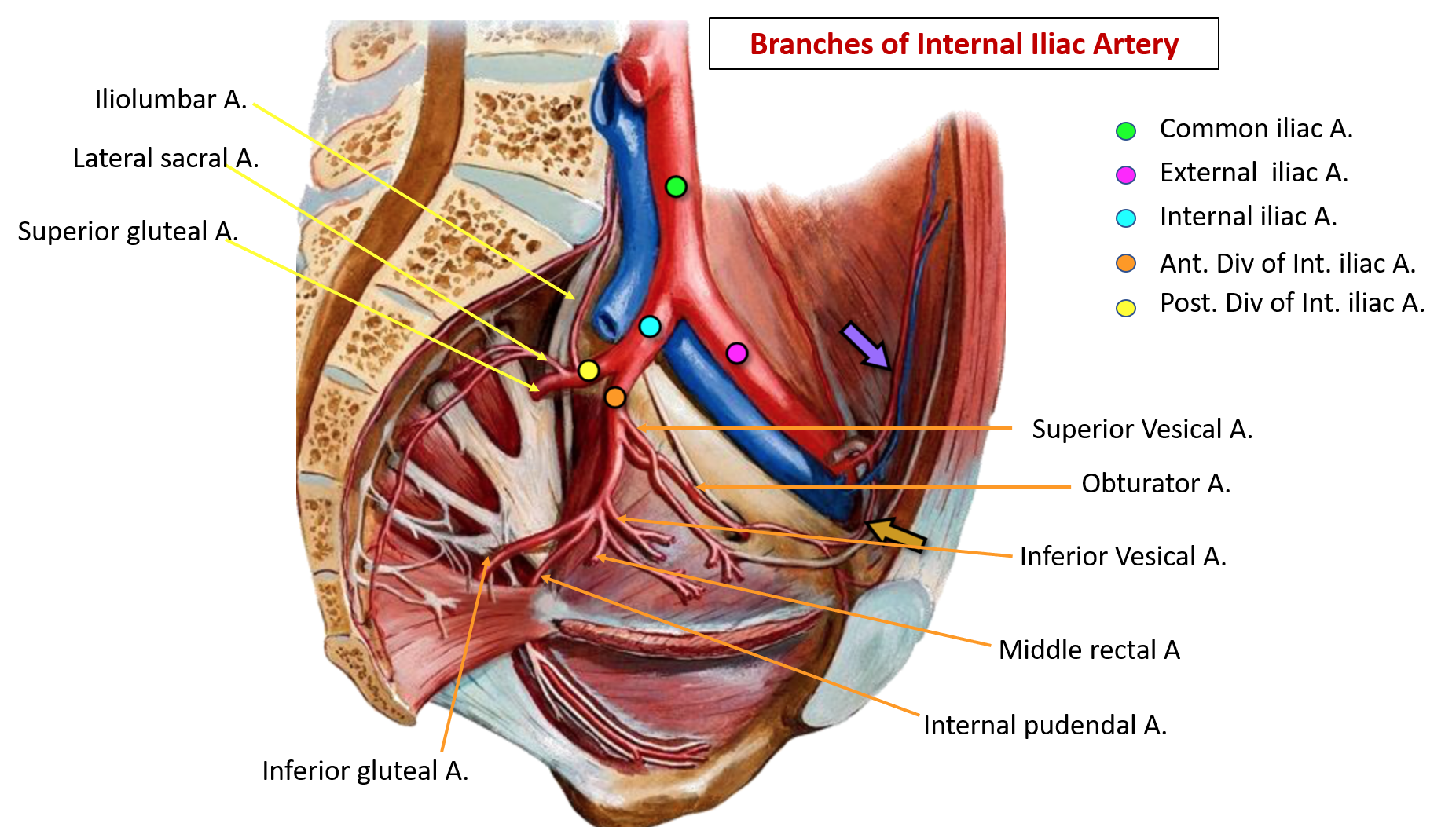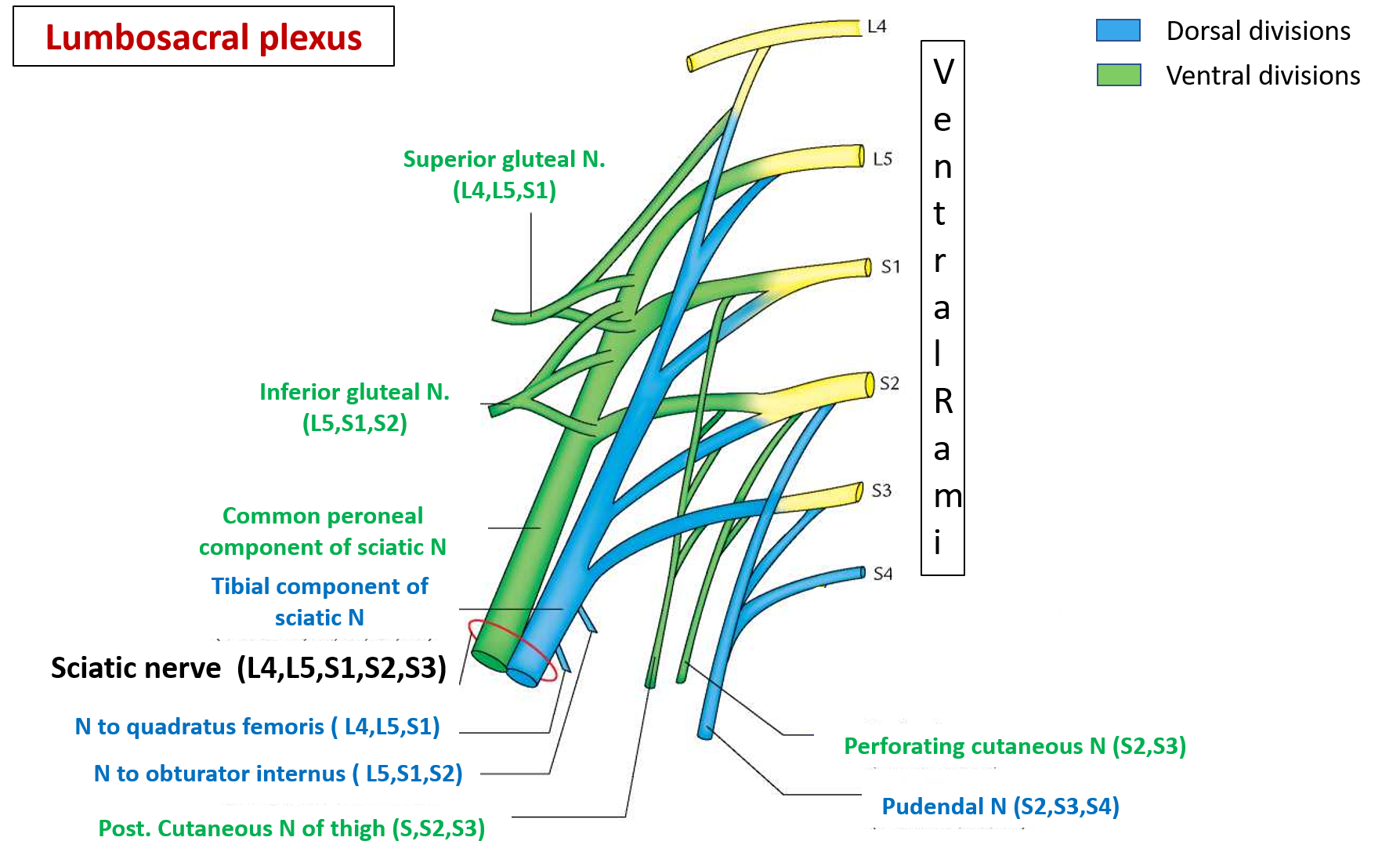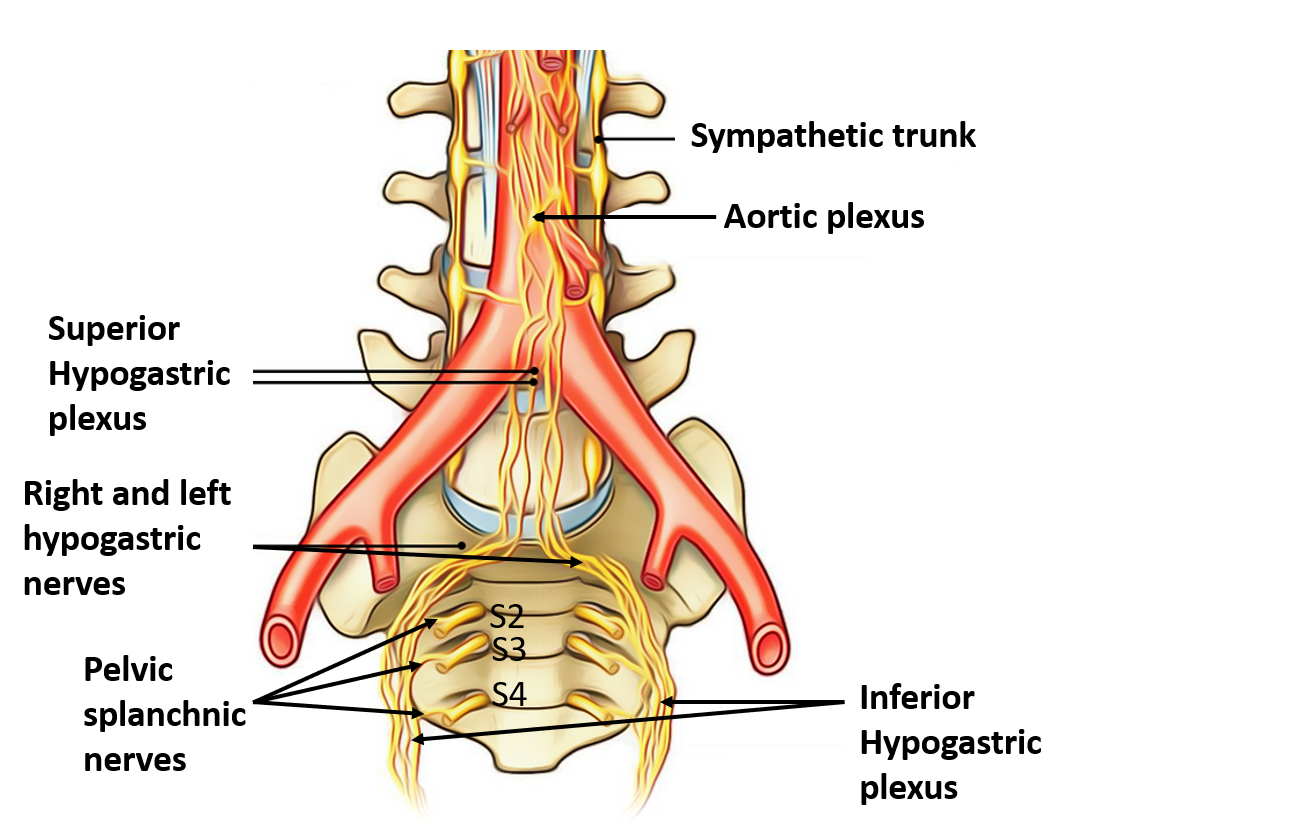Enumerate the branches of internal iliac artery.
Internal iliac artery is the smaller of the two terminal branches of common Iliac artery. At the upper margin of greater sciatic notch it divides into:
- Anterior division
- Posterior division

Branches of posterior division are three:
- Iliolumbar
- Superior gluteal
- Lateral sacral
Branches of anterior division are eight:
- Superior vesical
- Obturator
- Inferior vesical
- Middle rectal
- Internal pudendal
- Middle rectal
- Inferior gluteal
- Uterine (in females)
Enumerate the branches of lumbosacral plexus.
Lumbosacral plexus lies on the posterior wall of pelvis just lateral to the sacral foramina. It is formed by union of ventral rami of L4 (some fibers), L5, S1, S2, S3 which form the roots of plexus. The roots divide into ventral and dorsal divisions and supply lower part of wall of trunk and lower limb. Six nerves are formed from the ventral divisions and six from dorsal divisions. they are as follows:

Nerves formed from ventral divisions
- Tibial component of sciatic nerve (L4-S3)
- Pudendal nerve ( S2,S3,S4)
- Nerve to quadratus femoris (L4,L5,S1)
- Nerve to obturator internus ( L5,S1,S2)
- Posterior cutaneous nerve of thigh ( S1,S2) – has contribution from ventral divisions also
- Muscular branches to pelvic diaphragm ( S3,S4)
Nerves formed from dorsal divisions
- Common peroneal component of sciatic nerve (L4 -S2)
- Superior gluteal nerve ( L4, L5, S1)
- Inferior gluteal nerve ( L5, S1, S2)
- Perforating cutaneous branch ( S2,S3)
- Posterior cutaneous nerve of thigh ( S2, S3) – has contribution from dorsal divisions also
- branches to piriformis (S1,S2)
Describe briefly the location and formation and functions of superior and inferior hypogastric plexuses.
Superior Hypogastric plexus (also known as presacral nerve):
- Location: It is located at the level of bifurcation of aorta in front of lower part of body of L5 vertebra and sacral promontory.
- Formation: It is formed by union of
- Descending fibers from aortic plexus and third and fourth lumbar splanchnic nerves (carrying postganglionic sympathetic fibers from T10-12 and L1-2.spinal segments)
- Ascending fibers from inferior hypogastric plexus ( pelvic splanchnic nerves – parasympathetic fibers from S2,S3,S4 spinal segments.
*Superior hypogastric plexus divides into right and left hypogastric nerves which join the inferior hypogastric plexus.

Inferior Hypogastric Plexus
- Location: The right and left hypogastric plexuses are located on the sides of lower part of rectum. Each plexus surrounds the internal iliac artery.
- Formation: It is formed by the union of:
- Preganglionic sympathetic fibers from superior hypogastric plexus which reach via left and right hypogastric nerves.
- Preganglionic paraympathetic fibers from pelvic splanchnic nerves ( S2,S3,S4 spinal segments)
- It also receives sensory fibers from viscera.
- Each plexuses divides into subsidiary plexus formed along the visceral branches of internal iliac artery to supply pelvic viscera.
- Rectal plexus around middle rectal artery to supply rectum.
- Vesical plexus supplies urinary bladder, part of ureters and seminal vesicles.
- Prostatic plexus supplies prostate, seminal vesicles, urethra and erectile tissue of bulb and crura of penis.
- Uterine plexus supplies uterus, ovary and uterine tube.
- Vaginal plexus supplies vagina and erectile tissue of the bulbs of vestibule and clitoris.
Functions:
- Sympathetic fibers: cause epididymis, vas deferens, seminal vesicle and prostate to empty their contents into urethra ( Ejaculation). They are also responsible for constriction of internal urethral sphincter.
- Parasympathetic fibers: Control the contraction of muscular walls of urinary bladder, urethra and rectum. They are also responsible for Erection hence pelvic splanchnic nerves are also called nervi erigentes.
Applied Aspects
Superior Hypogastric Plexus Block
As afferent pain fibers from th urinary bladder, urethra, uterus, vagina, vulva, perineum, prostate, penis, testes, rectum, and descending colon reach superior hypogastric plexus, this block can alleviate pain originating from these regions. Blocking superior hypogastric plexus can relieve pain from the following etiologies:
- Cancer Pain from pelvic viscera
- Pelvic Inflammatory Disease
- Endometriosis
- Prostatitis
- Dysmenorrhea
- Irritable Bowel Syndrome
